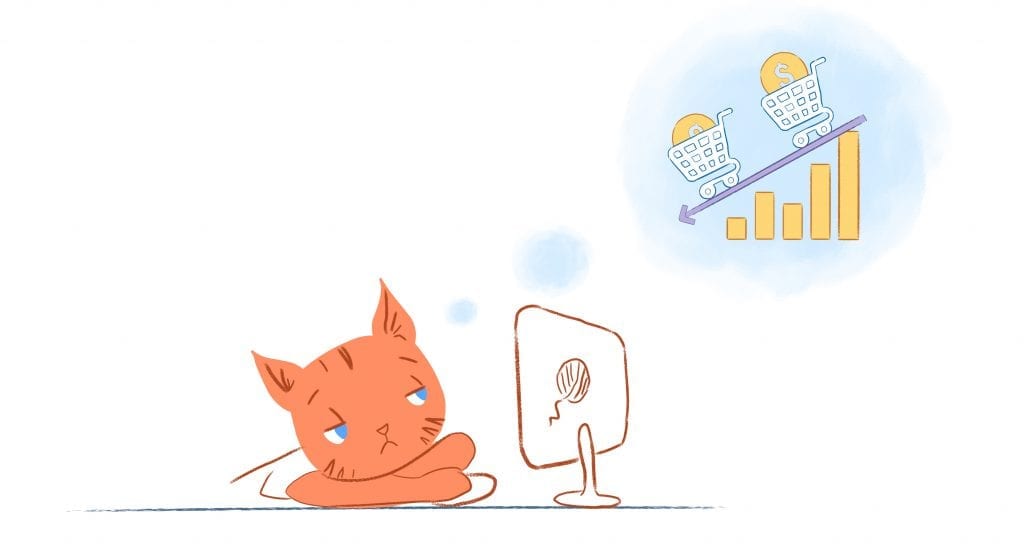

While dashboards are one of many methods, there are situations when a dashboard is still the best tool to assist in making the correct choices.
Dashboards are associated with analytics. It moved us away from the early days of legacy reporting when IT was the only data specialist. But they also spawned a plethora of modern-day corporate issues.
Some of the annoying issues with dashboards are that they constantly change user processes, learn new skills, and dig through comprehensive data too frequently with too many unconnected insights. And how about those executive meetings where a dashboard is an ineffective tool?
Is a dashboard a waste of time or not?
As a consequence, analytics are moving away from dashboards. Apps help us react to emails, find new music, and even monitor our health plans and health goals. Companies design software that predicts cancellations and no-shows based on past data. However, Gartner expects that these dashboards will be obsolete in the future. Incoming automation will take over, and they’ll dynamically create insights adapted to a user’s demands. This allows anybody in the company to get insight from data professionals.
What if the issue with standalone dashboards is that they are merely an app? What if we could give dashboards a curated blend of particular, practical data insights — to users at their point of consumption?
A new way of thinking about dashboards and analytics.
The user’s workflow and context must come first, followed by the insights required — and their presentation. Dashboards are one of many methods to communicate data insights to knowledgeable workers. Still, there are situations when a dashboard is still the best tool to assist leaders and employees in making the correct choices.
Quick decision-making knowledge
The dashboard in our cars is one of the first instances of a dashboard, and it does its functions well.
Why? Behind the wheel, drivers constantly judge speed, braking, steering, road conditions, and even the vehicle’s condition. If made simply on intuition, these judgments may have life-altering consequences without supporting facts. Dashboards are vital in a vehicle. It presents several parameters that drivers may quickly assess and utilize to adjust the vehicle in real-time.
In many other real-time business contexts, the dashboard is the best approach to incorporate data insights. We see great dashboards with utilities wanting to measure usage, emergency rooms that must monitor supplies and patient diagnoses, warehousing coordination of thousands of items, truck deliveries, and customers.
In each of these cases, we require a selected collection of particular insights to act. Dashboards may let employees quickly get real-time information, make choices, perform an action and repeat the ongoing processes of a business.
Assisting teams in dashboard action
Before COVID, many business people passed by TVs showing firm KPI dashboards. While many organizations have returned or are returning to the office — others will use online conference rooms, collaboration tools, and corporate portals to interact. These shared workspaces are a great area to include data insights in dashboards.
Shared dashboards are ideal for group analytics for two reasons:
First, dashboards show the same stats regardless of the viewer. This keeps groups on the same page. Employees may monitor their progress together. Boards may advise CEOs to use the same measures. Public corporations must give particular quarterly figures (typically in raw tables), so public investors may compete.
Second, asynchronous shared dashboards keep teams aware of vital but less urgent information depending on their particular processes. This allows teams to behave as one, such as at a meeting. Others who merely need to be informed may concentrate on their task without being distracted. Finally, everyone stays on the same page, working at their own speed.
Using analytics at work
With each new generation of analytics and business intelligence, we grow closer to using data to make choices. This is why we must constantly emphasize people’s workflows and consumption points, not the other way around.
Consider analysts who interpret data. It’s their primary app, not a different one. So they should be using analytics and BI tools. A dashboard might help salespeople receive a quick snapshot of their quota progress or which accounts to follow up with when they first log into their CRM.
Dashboards, at a glance, may be vital for physicians, mechanics, and facility managers. In each case, the dashboard provides valuable information depending on the user’s workflow and environment.
Finally, how we display data insights is a decision. Going beyond the dashboard doesn’t imply we don’t need IT-led reporting in some instances.
Simple future: Find out where knowledge workers are working, and then give ideas that can help them. The dashboard is the best option in certain circumstances, and we’ll know because people will utilize it and make better judgments. This is just common sense for our uncommon times. We’re not in Kansas anymore, Toto.
Featured Image: Josh Sorenson; Pexels.com; Thank you!











Hunter Meine
Hunter Meine is a BYU-Idaho graduate, husband, father, and writer. When he's not writing, he's playing sports or enjoying the outdoors with his wife and daughter.